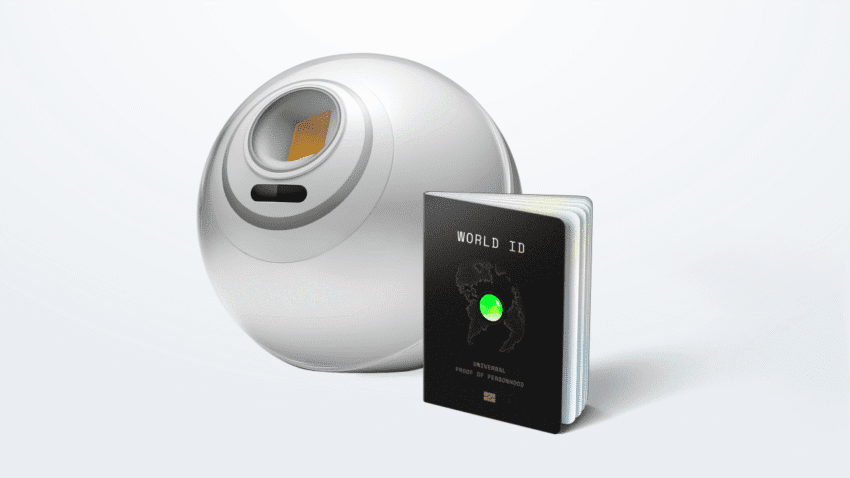
should you trust tools for humanity s Tools for Humanity has introduced an iris-scanning orb aimed at verifying human identity in an increasingly digital world.
should you trust tools for humanity s
Introduction to the Iris-Scanning Orb
In an era where artificial intelligence and bots are proliferating online, distinguishing between human users and automated systems has become a pressing concern. The rise of deepfakes and AI-driven fraud has prompted various industries to seek innovative solutions to verify identities. One such solution comes from Tools for Humanity, which has developed an iris-scanning orb designed to authenticate users by scanning their irises. This technology raises significant questions about privacy, security, and the implications of biometric verification in our daily lives.
The Technology Behind the Orb
The iris-scanning orb utilizes advanced biometric technology to capture and analyze the unique patterns in an individual’s iris. This method is touted as a highly secure form of identification, as the iris is one of the most distinctive and stable features of the human body. Unlike fingerprints, which can be altered or damaged, the iris remains consistent throughout a person’s life.
How It Works
When a user approaches the orb, it employs infrared light to illuminate the eye, capturing a high-resolution image of the iris. This image is then processed using sophisticated algorithms that compare the iris pattern against a database of previously scanned irises. If a match is found, the user is authenticated as a legitimate human being. This process is designed to be quick and efficient, taking only a few seconds to complete.
Potential Applications
The applications for this technology are vast and varied. Some potential use cases include:
- Online Security: The orb could be used to secure online accounts, ensuring that only verified users can access sensitive information.
- Financial Transactions: In banking and e-commerce, iris scanning could provide an additional layer of security, reducing the risk of fraud.
- Social Media Verification: Platforms could implement this technology to verify the identities of users, helping to combat the spread of misinformation and fake accounts.
- Access Control: Businesses and organizations could use the orb to manage access to secure areas, ensuring that only authorized personnel can enter.
Privacy Concerns
While the iris-scanning orb presents a promising solution to identity verification, it also raises significant privacy concerns. The collection and storage of biometric data pose risks that must be carefully considered. Critics argue that the potential for misuse of this data is high, especially if it falls into the wrong hands.
Data Security Risks
Biometric data is inherently sensitive, and once compromised, it cannot be changed like a password. If a hacker gains access to a database of iris scans, the implications could be severe. Unlike traditional identification methods, such as passwords or PINs, individuals cannot simply reset their biometrics. This permanence raises the stakes for data security, necessitating robust encryption and protection measures.
Surveillance and Tracking
Another concern is the potential for surveillance and tracking. The ability to scan and identify individuals in public spaces could lead to a surveillance state where personal freedoms are compromised. The ethical implications of such technology must be thoroughly examined, as the line between security and privacy becomes increasingly blurred.
Regulatory Landscape
The introduction of biometric technologies like the iris-scanning orb also brings forth questions regarding regulation. Governments worldwide are grappling with how to manage and oversee the use of biometric data. In many jurisdictions, existing laws may not adequately address the complexities introduced by such technologies.
Current Regulations
In the United States, for instance, there is no comprehensive federal law governing the use of biometric data. Some states have enacted their own regulations, such as the Illinois Biometric Information Privacy Act (BIPA), which imposes strict guidelines on the collection and storage of biometric information. However, the patchwork nature of these laws can create confusion and inconsistency in enforcement.
Future Legislation
As biometric technologies become more prevalent, there is a growing call for comprehensive legislation to protect individuals’ rights. Policymakers must strike a balance between fostering innovation and ensuring that privacy rights are upheld. This may involve creating standards for data security, consent, and transparency in the use of biometric identification systems.
Stakeholder Reactions
The introduction of the iris-scanning orb has elicited a range of reactions from various stakeholders, including technology experts, privacy advocates, and potential users.
Support from Technology Experts
Many technology experts view the iris-scanning orb as a significant advancement in identity verification. They argue that as online interactions become more complex and fraudulent activities increase, innovative solutions like this are necessary to protect users. Proponents highlight the orb’s potential to enhance security and streamline processes across various sectors.
Concerns from Privacy Advocates
Conversely, privacy advocates express deep concerns about the implications of biometric identification. They argue that the risks associated with collecting and storing biometric data far outweigh the benefits. Many advocate for stricter regulations and oversight to ensure that individuals’ rights are protected in the face of advancing technology.
User Perspectives
Potential users of the iris-scanning orb have mixed feelings about the technology. While some appreciate the enhanced security it offers, others are wary of the privacy implications. Trust in how their biometric data will be handled is a significant factor in user acceptance. Companies deploying this technology must be transparent about their data practices to build trust with users.
Conclusion: The Path Forward
The iris-scanning orb from Tools for Humanity represents a bold step into the future of identity verification. While it offers promising solutions to the challenges posed by bots and online fraud, it also raises critical questions about privacy, security, and regulation. As this technology evolves, it will be essential for stakeholders to engage in open discussions about its implications and to develop frameworks that protect individual rights while fostering innovation.
As we navigate this new landscape, the balance between security and privacy will be paramount. The success of the iris-scanning orb will depend not only on its technological efficacy but also on the trust it can establish with users and the regulatory frameworks that govern its use.
Source: Original report
Was this helpful?
Last Modified: October 23, 2025 at 8:39 am
1 views















